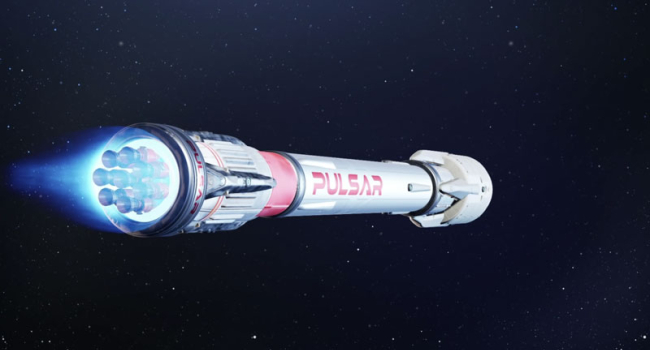
UK, US and AI will create a rocket with a thermonuclear engine that will make it possible to reach Mars in 30 days
Collaboration between Pulsar Fusion, a UK-based aerospace company, and Princeton Satellite Systems is set to revolutionize space travel through the use of AI machine learning and nuclear fusion technology. The partnership aims to study the behavior of plasma in an aneutronic propulsion system using data from the Princeton field-reverse configuration (PFRC-2) reactor, which holds the world record for fusion power.
In a groundbreaking initiative, Pulsar Fusion and Princeton Satellite Systems will leverage the most advanced machine learning technologies to analyze data from plasma shots conducted at the PFRC-2. Developed in collaboration with Princeton Plasma Physics Laboratory, the reactor will provide valuable insights into the behavior of super-hot fusion plasma in a rocket engine configuration.
The primary focus of this research is to understand how a nuclear fusion plasma will behave as it exits a rocket engine, emitting exhaust particles at speeds reaching hundreds of kilometers per second. By examining these dynamics, the project aims to uncover key information that will contribute to the development of a deep space rocket engine capable of reaching speeds of up to 500,000 miles per hour.
One of the key objectives of Pulsar Fusion is to create predictive simulations of ion and electron behavior in an FRC plasma. To achieve this, the company is utilizing gas puffing data from the PFRC-2 to develop simulations for closed-loop control systems, which are crucial components for future PFRC reactors.
The ultimate goal of this partnership is to drastically reduce travel times within our solar system. By harnessing the power of nuclear fusion, Pulsar Fusion and Princeton Satellite Systems envision cutting the journey time to Mars down to just 30 days. Furthermore, their ambitious project aims to make Saturn's moon Titan reachable within two years.
Richard Dinan, founder and CEO of Pulsar Fusion, expressed his enthusiasm for this significant milestone, stating, "This is a hugely significant step for Pulsar. By pooling our own research and resources with those of Princeton Satellite Systems, Pulsar has gained access to behavioral data from the world record holding fusion reactor (PFRC-2) coupled with recent advancements in machine learning. This will supercharge the development of our nuclear fusion rocket systems."
Dinan went on to highlight the advantages of fusion propulsion in space, emphasizing that it eliminates the vast infrastructure requirements associated with terrestrial fusion energy development for power stations. With the vacuum environment and extremely cold temperatures of space, fusion propulsion becomes an ideal solution. Unlike fusion power stations, fusion propulsion does not require giant steam turbines, and fuels can be sourced externally rather than needing on-site creation.
The potential of fusion propulsion cannot be understated, as it offers 1000 times the power of conventional ion thrusters currently used in orbit. Dinan firmly believes that if humans can achieve fusion for energy, fusion propulsion in space is inevitable. He predicts that fusion propulsion will be successfully demonstrated in space decades before fusion can be harnessed for energy on Earth.
The collaboration between Pulsar Fusion and Princeton Satellite Systems represents a major leap forward in the quest for faster and more efficient propulsion systems. As humanity's space economy continues to grow, the development of fusion-powered rockets could pave the way for a new era of space exploration and travel.
- Related News
- James Webb captures never-before-seen details of Horsehead Nebula (photos)
- Is there a ninth planet in the solar system? Scientists find new evidence
- The end of the Universe: 3 plausible theories of a global apocalypse
- Mutated bacteria resistant to drugs found on the ISS: What does this mean and why is it a problem?
- 4 flares erupted from Sun in rare event: the Earth may be hit by geomagnetic storm (video)
- 11 incredible satellite photos published on Earth Day
- Most read
month
week
day
- 10 most interesting architectural works of Zaha Hadid 804
- Alphabet will pay dividends for the first time in its history 785
- Google is developing a budget smartwatch 748
- Large taxpayers of Armenia’s IT sector: What changes have taken place in 2024 Q1? 701
- Powerful battery, Snapdragon 7 Gen 3, IP54, 120 Hz: Oppo introduces it’s new Oppo K12 smartphone, priced at $260 695
- 4 flares erupted from Sun in rare event: the Earth may be hit by geomagnetic storm (video) 681
- Date of new Apple presentation known: When will they show us new iPad Pro with OLED screen? 670
- Mutated bacteria resistant to drugs found on the ISS: What does this mean and why is it a problem? 662
- iPhone users can now login into WhatsApp without password 655
- Insider shows mockups of all 4 iPhone 16 models 645
- Archive
